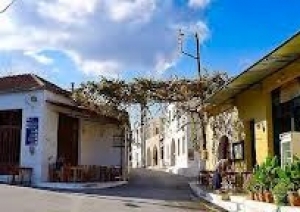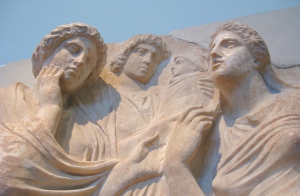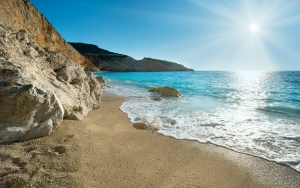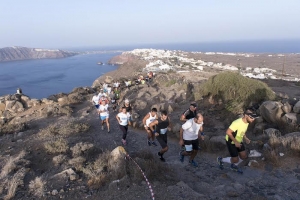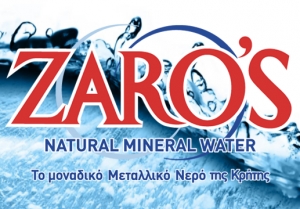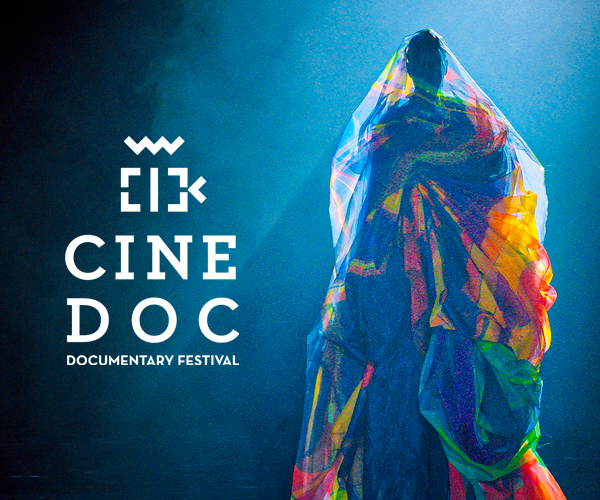XpatAthens
Settling-In Support Services
-
City orientation and neighborhood tours.
-
Introduction to the public transport system.
-
Registration with local authorities.
-
Assistance with opening bank accounts and obtaining insurance.
-
Help with purchasing furniture, appliances, and home essentials.
-
Access to medical facilities and healthcare recommendations.
-
Vehicle lease or purchase assistance.
-
Pet registration.
-
Home and office utilities setup.
-
Tips on dining, shopping, fitness, and local lifestyle.
My Week (not) in Athens
Crete: the isle of the Minoans, the isle of fantastic food, beautiful beaches, authentic villages, picturesque landscapes – and seventeen Ryan Air flights per week.
Crete really does have it all. It is big – very big – and requires resetting one’s geographic ‘clock’ to allow more time to get to one’s destination. But the rewards are well worth the drives…
With 8 people in tow, the island holiday takes on a decidedly positive flavor. Costs are shared, laughs are had, and fond memories are created. Deciding where to have dinner does prove to be a challenge, but splitting the bill by 8 means that we have been consistently surprised at the great value and low cost of this holiday.
We are staying in the little village of Gavalohori, a 30-minute drive east of Chania. I can confidently report that Gavalohori is one of the most ‘authentic’ Greek villages I have seen yet. It is tiny, with 2 tavernas, 1 kafeneio and a general store. There is a beach nearby, and the Lefka Oroi mountain range as a backdrop. There are families who have lived here for generations, in houses that look like they’ve been standing forever.
Between swimming, eating & drinking, and hanging with friends, it seems like the typical island holiday doesn’t involve much activity. Sure, you can visit an ancient site, or browse in the shops – but at the end of the day, sitting still and sharing with friends is what an island escape should be about. And in my world, this is a good thing.
And there are a lot of tourists here. Everywhere – including lots of Greeks. But the size of the island means that it never feels over-crowded. And truth be told, I am happy to see full restaurants and crowded beaches – maybe it means that tourism numbers are back to normal. Maybe it just means that ‘doing nothing’ was also on the agenda of everyone else who is tired of the everyday in Europe.
Until next week,
Jack
In this weekly space, keep up with ‘Jack’ as he navigates daily life in Athens… Anecdotes, stories, hits & misses, the good, the bad and, well, the rest…
Trattoria Da Nonna
Enjoy!
Address Griva 18, Chalandri, 15233
210 6830 009, orderdanonna@gmail.com
Tuesday - Friday 6pm to 12am
Monday closed
Saturday-Sunday 1pm to 12 am
gourmetandcheap.com
Do you have a recommendation or recipe to share? Send it to us at ideas@xpatathens.com!
Thousands Of SMEs Can Drop Out Of VAT Payment System
Small and medium-sized Greek enterprises with an annual turnover of up to 10,000 euros will be able to spare themselves from the system of value-added tax returns as long as they submit an application by Monday, January 12.
Up to 415,000 SMEs are eligible for the provision that will allow them not to charge VAT on the receipts and invoices they issue and relieves them of having to submit a quarterly VAT statement and payment.
The turnover threshold of 10,000 euros concerns the 2014 financial year and does not include VAT.
Farmers and sellers of new vehicles are not eligible.
To read more, please visit ekathimerini.com
By Prokopis Hatzinikolaou
Pleated Feta Filo Pie & Green Tomato Chutney
It all started with these: A bushel full of end-of-summer green tomatoes that I picked, literally, an hour before we left the island for Athens. I just couldn’t leave them behind. I love the acidity and crunch of green tomatoes, but I had never made chutney with them.
So, inspired by the pine honey, hot peppers, and dark raisins of Ikaria, the latter of which were once a prized agricultural product on the island, I set out, in my Athens kitchen, to make chutney because I wanted to serve it with a simple feta-phyllo pie, tyropita.
I call this my pleated tyropita recipe, because of the way you have to fill and scrunch up individual sheets of feta-cheese-stuffed pastry before baking. It’s a technique I learned a few years ago, and I’ve made the recipe a little healthier, by replacing the butter with extra virgin Greek olive oil.
Serve it with the chutney, of course!
To get the recipe, please visit dianekochilas.com
By Diane Kochilas
The Ancient Greeks’ Six Words For Love
Today's coffee culture has an incredibly sophisticated vocabulary. Do you want a cappuccino, an espresso, a skinny latte, or maybe an iced caramel macchiato?
So what were the six loves known to the Greeks? And how can they inspire us to move beyond our current addiction to romantic love, which has 94 percent of young people hoping—but often failing—to find a unique soul mate who can satisfy all their emotional needs?
1. Eros, or sexual passion
Eros involved a loss of control that frightened the Greeks, which is odd, because losing control is precisely what many people now seek in a relationship. Don't we all hope to fall 'madly' in love?
2. Philia, or deep friendship
The second variety of love was philia or friendship, which the Greeks valued far more than the base sexuality of eros. Philia concerned the deep comradely friendship that developed between brothers in arms who had fought side by side on the battlefield. It was about showing loyalty to your friends, sacrificing for them, as well as sharing your emotions with them. Another kind of philia, sometimes called storge, embodied the love between parents and their children.
3. Ludus, or playful love
This was the Greeks' idea of playful love, which referred to the affection between children or young lovers. We've all had a taste of it in the flirting and teasing stages of a relationship, but we also live out our ludus when we sit around in a bar bantering and laughing with friends, or when we go out dancing.
4. Agape, or love for everyone
The fourth love, and perhaps the most radical, was agape or selfless love. This was a love that you extended to all people, whether family members or distant strangers. Agape was later translated into Latin as caritas, which is the origin of our word 'charity.'
C.S. Lewis referred to it as 'gift love,' the highest form of Christian love. But it also appears in other religious traditions, such as the idea of mettā or 'universal loving kindness" in Theravāda Buddhism.
There is growing evidence that agape is in a dangerous decline in many countries. Empathy levels in the U.S. have declined sharply over the past 40 years, with the steepest fall occurring in the past decade. We urgently need to revive our capacity to care about strangers.
To read this article in full, please visit: Yes Magazine
September Heatwave!
Sun and high tempartures are in the forecast for the next few days throughout Greece. Northern and eastern parts of the country will experience temperatures up to 36C, while eastern parts will reach up to 38C. The Aegean islands and Crete can expect temperatures up to 37C. In Athens it will reach up to 39C and in Thessaloniki up to 37C.
Here's what to expect for the next few days in Athens:
Thursday: 35C
Sources: Protothema & The Weather Channel
October The Month Of Swimming, Of Running, Of Santorini!
The event had the honor of the presence of the Greek National Tourism Organization General Secretary, Mr. Dimitrios Tryfonopoulos and the President of the Hellenic Swimming Federation, Mr. Dimitrios Diathesopoulos.
The event was assisted by Diana “exoplizein”, Kassimatis Cycling, Science In Sport, Hellenic Athletics Federation (SEGAS), IAAF Kids Athletics, Grafistes, Aeromotion Aerial Video Photography, Rivios Thanos Photography, Aegean Divers, National Lifeguards of Santorini, University of Peloponnese – Department of Sports Management Implementation and Lifeguard Patrol.
Santorini Experience in cooperation with the MPASS innovated by presenting the Santorini Experience chatbot!
The event served, directly and reliably via Facebook Messenger, all the participants of the event who needed to have all the necessary information for the top sports tourism event!
Through Santorini Experience Chatbot, participants, when writing their bib number in running were able to receive a message with their time, at the time of their finishing, and were informed on offers that were active during the event, and on individual activities which took place.
Santorini Experience was held with the collaboration between the Municipality of Santorini, the Municipal Sports Cultural Environmental Organization of Santorini (D.A.P.P.O.S.) and Active Media Group.
Official Broadcaster: FOX Sports
Official Sponsors: Alafouzos Sport, Blue Star Ferries, With the Kind Support of the Greek National Tourism Organization, Santorini Boatmen Union
Official Airline Partner: Ryanair
Official Supporters: Ford Motor Hellas, “Vikos” Natural Mineral Water, Avance Rent A Car, Aqua Vista Hotels, Santorini Hoteliers Association, Meltemi Hotels & Resorts, Aegean Plaza Hotel, Saucony, Arena, Village Cinemas, Santorini Yachting Club, Demilmar Restaurant Beach Bar, Passagio Santorini Oia
Hospitality Sponsors: Aqua Vista Hotels, Santorini Hoteliers Association, Meltemi Hotels & Resorts, Aegean Plaza Hotel, Athina Luxury Suites, Santorini Secret Suites & Spa, Vedema A Luxury Collection Resort Santorini, Sunday Suites Santorini, Caldera Collection, West East Suites, 270 Oia's View, White Pearl Villas, Suites of the Gods Spa Hotel Santorini, Central Fira Hotel, Memories Hotel, Loizos Stylish Residencies, Esperas Santorini, Maistros Village Hotel, Sienna Residencies
Assisted by: Diana “exoplizein”, Kassimatis Cycling, Science In Sport, Hellenic Athletics Federation (SEGAS), IAAF Kids Athletics, Grafistes, Aeromotion Aerial Video Photography, Rivios Thanos Photography, Aegean Divers, National Lifeguards of Santorini, University of Peloponnese – Department of Sports Management Implementation, Lifeguard Patrol, European Lifeguard School
With the Kind Support & Under the Auspices of the Greek National Tourism Organization
Website
Facebook Page
Facebook Event
Youtube Channel
Google+
Image Credit: Vangelis Patsialos
The New And Cool In Athens
New Hotel Ancient Views - Electra Metropolis Athens
In the hands of interior designer – architect Maria Katsarou-Vafiadis, of the London-based MKV firm, a 1960s office building, formerly home to the Ministry of Education, has been transformed into a stylish five-star hotel, oozing Athenian retro-chic coolness. Highlights start right from the entrance canopy, where you will see the refurbished post-Byzantine Church of Aghia Dynami, to the impressive lobby atrium, featuring a gigantic artwork by famous Greek artist Alekos Fassianos, all the way up to the roof garden and pool, which offers the most breathtaking 360-degree view to enjoy while sipping a cocktail or dining. Check out the cute ground-level bistro as well, where remnants of the ancient city can be seen through glass floors, proving that, wherever you dig in Athens, there is always something ancient to be found.
Address: 15 Mitropoleos
Telephone: 214 100 6200
Website
Drupes & Drips - Takis Bakery
Fans of Takis Bakery near the Acropolis just got a whole new range of options, with a new Italian espresseria and a juice bar. Pick up a freshly made fruit juice, or choose a “pedigree” coffee prepared by expert baristas. At lunchtime, the small space becomes a cicchetteria, so you can try hams and cheeses from abroad or from small-scale Greek producers. There are no tables, so sit at the bar and have a glass of wine, spritz, prosecco or potent Greek tsikoudia with your nibbles.
Address: 20 Zitrou
Telephone: 210 923 0052
Yoleni’s Grocery
If you think that this country is only about olive oil and honey, try visiting this unique five-story temple of Greek gastronomy to find local goods and produce. From local soda pops to nuts and kale flakes, and even local gin, you’ll find it all here. An amazing selection of over 50 brands of extra virgin olive oil, a wide assortment of cheeses, and dozens upon dozens of different kinds of canned goods line the shelves.
Address: 9 Solonos
Telephone: 212 222 3600
Website


